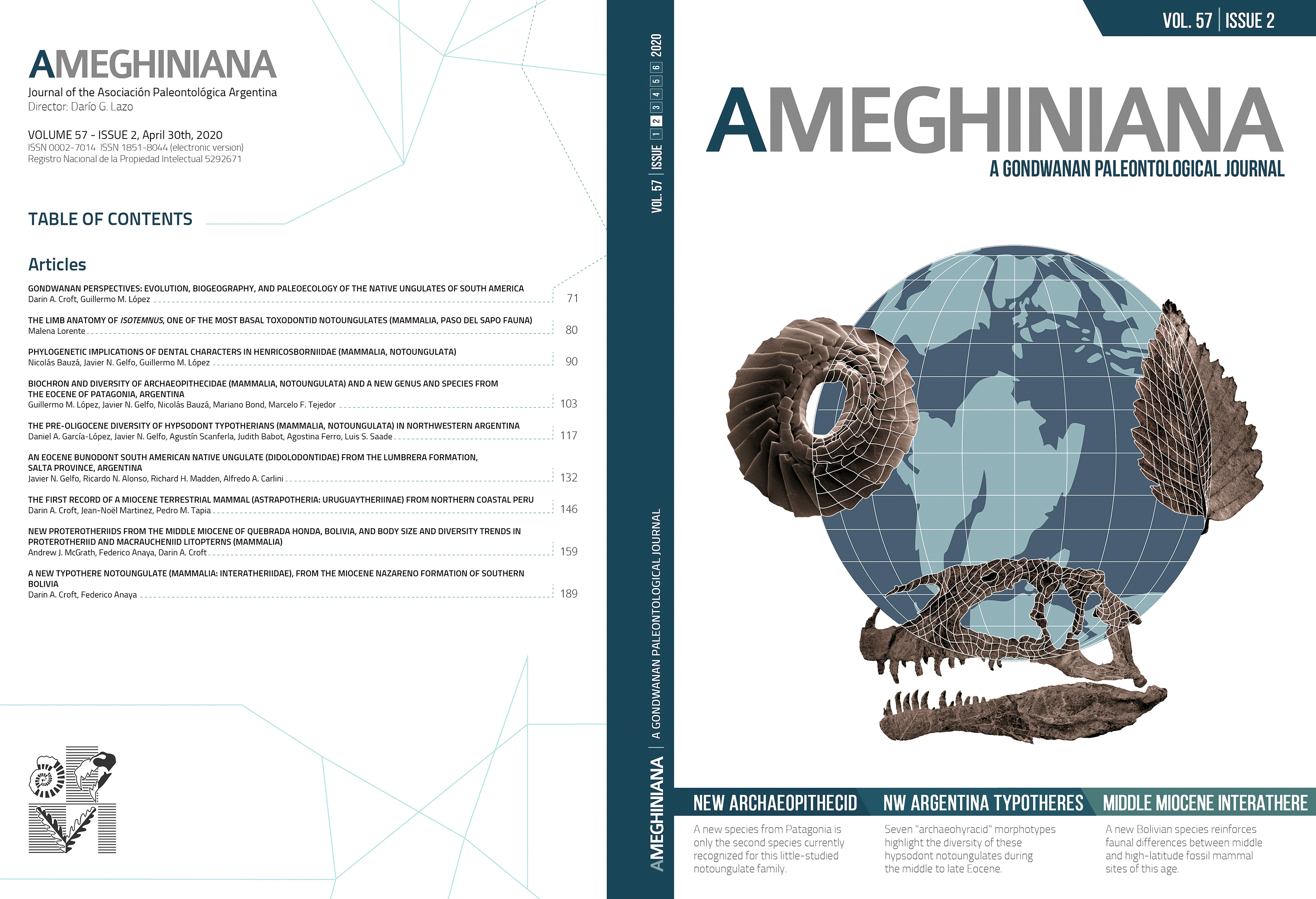PHYLOGENETIC IMPLICATIONS OF THE DENTAL CHARACTERS IN HENRICOSBORNIIDAE (MAMMALIA, NOTOUNGULATA)
DOI:
https://doi.org/10.5710/AMGH.18.01.2020.3304Keywords:
Paleogene, Patagonia, Dental morphology, Geometric morphometrics, RevisionAbstract
Henricosborniids are a group of South American native ungulates mainly found in Argentina (several Patagonian localities, Jujuy, and Mendoza), Brazil (São José de Itaboraí), and Bolivia (Tiupampa) that have a biochron ranging from the Danian (Tiupampan SALMA) to the late Bartonian (Barrancan subage of the Casamayoran SALMA). The record of henricosborniids in Mustersan levels must be confirmed. The family includes the genera Henricosbornia, Peripantostylops, Othnielmarshia, Orome, and Simpsonotus. Their fragmentary fossil record, mainly limited to isolated teeth, has constrained their utility for obtaining phylogenetically useful characters; for that reason, only few taxa (i.e., Henricosbornia, Simpsonotus) are usually included in this type of analysis. Even though there is consensus about the basal position of the group within the order, the family is recovered as polyphyletic or, more commonly, paraphyletic. The analysis of specimens from the early Eocene of Las Violetas and Las Flores (Itaboraian SALMA), the oldest Patagonian localities yielding notoungulate remains, and Paso del Sapo, along with the implementation of both implied weighting and landmark information, allow us to discuss several features for use in henricosborniid phylogenetic analysis and identification: 1) ectoloph of the molars with well-marked paracone and metacone folds; 2) molars with crochet present, oblique to the ectoloph, with variable development; 3) triangular third upper molar, with poorly developed hypocone; 4) reduced trigonid with short paralophid; 5) entoconid more like an isolated cusp and not completely crested. Although useful, these characters need to be evaluated in a more exhaustive phylogenetic context.Downloads
Published
Issue
Section
License
Authors publishing in Ameghiniana have the option of making their article freely available online. Authors opting for the Open Access must pay a fee of $300 (US dollars) to cover article-processing costs and to ensure the article is made open access. Please contact the Production Team after the acceptance of your manuscript if you are interested in making your article Open Access. This option implies by default a license Creative Commons Attribution Non-Commercial-NoDerivs License (CC BY NC ND). If your funding institution requires a different licensing option please communicate this to the Production Team after the acceptance of your manusctipt.











